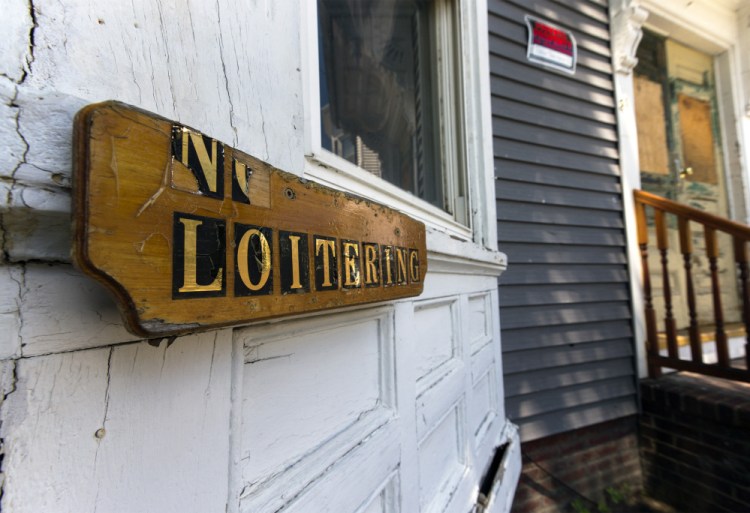If you want to understand the bind that low-income people face in a tight real estate market, listen to the former tenants of 31 Oxford St. in Portland who are being evicted because of something their landlord did.
They were stuck renting in a rundown building made unsafe by drug-dealing neighbors because the owner would accept rent vouchers – a rarity these days. But since he didn’t live up to commitments he made in court to improve the property, they now have no place to live. And the housing that they will be able to afford is very likely to have all of the same problems.
The city condemned the building on Oxford Street last month because it violated Portland’s “disorderly house” ordinance by requiring frequent police visits to keep the peace. Landlord Clark Stephens went to court and agreed to screen his tenants and remedy health and safety problems at the property, but did not follow through. So his tenants were all issued eviction notices, whether they were troublemakers or not.
The situation is highly unusual – no Portland building had ever been condemned under the nearly 20-year-old ordinance. But the problem faced by the tenants is all too common.
There is fierce competition for housing in the city, even in neighborhoods that used to be considered undesirable. New owners are investing in renovations, and attracting new tenants who are able to pay higher rents.
Low-income families are driven out and become easy prey for the few landlords who don’t want to invest in their properties, and who are happy to collect the rent of people who won’t complain about the conditions.
This is a process sometimes called “gentrification,” but that’s a label that puts the focus in the wrong place.
It’s not the new tenants who are causing the problem, or the building owners who are investing in their property. The housing crunch is caused by a lack of supply and an inadequate safety net for people who don’t have the income to compete in the market.
The big lesson of the 20th century public housing experiment was that when you force the poor to live in ghettos, their problems multiply. Businesses don’t want to move near such neighborhoods, residents have to travel long distances to find work, and crime has an out-of-sight place to flourish.
Mixed-income neighborhoods create far fewer problems. They’re better not just for the low-income residents, but also for the property tax payers and neighbors.
Upgrading neighborhoods and displacing residents create new low-income neighborhoods that have many of the same problems as big housing projects.
Maintaining neighborhoods by keeping housing affordable across incomes while still encouraging newcomers and investors is no simple matter. Portland has taken steps in the right direction with its inclusionary zoning ordinance, which requires developers of new market-rate buildings to set aside affordable units or pay into a housing fund. Nonprofit agencies are developing housing that will stay affordable as neighborhood prices go up.
But the city and state need to do more to ensure that rent assistance programs don’t end up becoming subsidies for slumlords.
Send questions/comments to the editors.



Comments are no longer available on this story